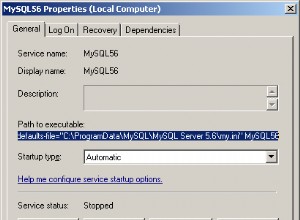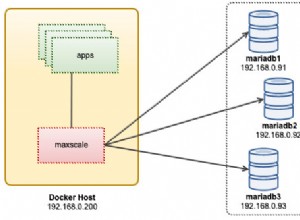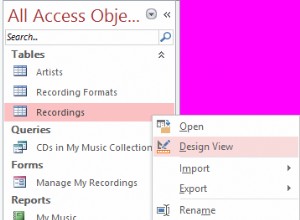Puoi usare questo approccio:
- Inserisci i tuoi dati di riferimento in file XML, uno per tabella
- Aggiungi file XML con dati di riferimento al tuo progetto di database
- Utilizza uno script post-distribuzione per estrarre i dati da XML e unirli alle tue tabelle
Ecco una descrizione più dettagliata di ogni passaggio, illustrata con un esempio. Diciamo che devi inizializzare una tabella di paesi che ha questa struttura:
create table Country (
CountryId uniqueidentifier NOT NULL,
CountryCode varchar(2) NOT NULL,
CountryName varchar(254) NOT NULL
)
Crea una nuova cartella chiamata ReferenceData sotto il tuo progetto di database. Dovrebbe essere una cartella di pari livello degli Schema Objects e Scripts .
Aggiungi un nuovo file XML chiamato Country.xml al ReferenceData cartella. Compila il file come segue:
<countries>
<country CountryCode="CA" CountryName="Canada"/>
<country CountryCode="MX" CountryName="Mexico"/>
<country CountryCode="US" CountryName="United States of America"/>
</countries>
Trova Script.PostDeployment.sql e aggiungi il codice seguente:
DECLARE @h_Country int
DECLARE @xmlCountry xml = N'
:r ..\..\ReferenceData\Country.xml
'
EXEC sp_xml_preparedocument @h_Country OUTPUT, @xmlCountry
MERGE Country AS target USING (
SELECT c.CountryCode, c.CountryName
FROM OPENXML(@h_Country, '/countries/country', 1)
WITH (CountryCode varchar(2), CountryName varchar(254)) as c) AS source (CountryCode, CountryName)
ON (source.CountryCode = target.CountryCode)
WHEN MATCHED THEN
UPDATE SET CountryName = source.CountryName
WHEN NOT MATCHED BY TARGET THEN
INSERT (CountryId, CountryCode, CountryName) values (newid(), source.CountryCode, source.CountryName)
;
Ho provato questa soluzione solo in VS 2008, ma dovrebbe essere indipendente dal tuo ambiente di sviluppo.




